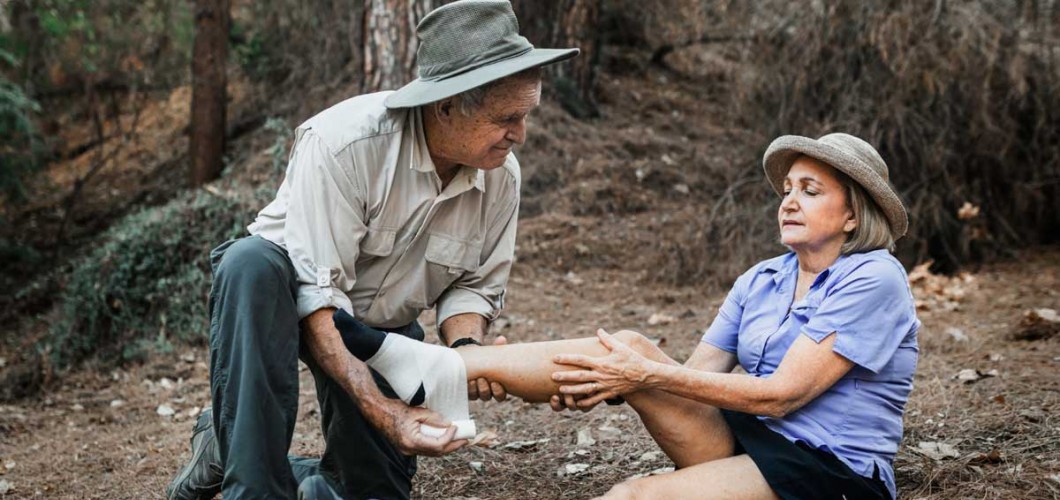
First Aid in Nature: Things to Keep in Mind During Camping and Hiking
Spending time in nature offers great benefits for both physical and mental health. However, being in the wild also comes with certain risks. Camping and hiking expose us to potential accidents and emergencies that require swift and correct intervention. First aid knowledge plays a crucial role in ensuring that time spent outdoors is safe and healthy.
In this article, we will discuss common health issues encountered in nature and provide first aid techniques for handling these situations. By learning the essential first aid information, you can ensure your safety during camping or hiking.
1. Falls and Injuries
One of the most common accidents in nature is falling and resulting injuries. Especially in mountainous or rocky areas, slips, trips, and loss of balance can lead to falls. These falls can cause sprains, cuts, fractures, or even more serious head and back injuries.
First Aid Methods:
- Fractures and Sprains: If there is a suspected fracture or sprain, it’s important not to move the injured area. You can immobilize the affected area using available materials (such as a wooden stick or a thick branch). Keep the broken area as still as possible and call for medical help immediately.
- Cuts and Wounds: If there is a cut or scrape, the wound should be cleaned. Apply pressure with a clean cloth to stop bleeding and then cover the wound with antiseptic ointment and a sterile bandage.
- Head and Back Injuries: In case of head or back injuries, the person should not be moved. The person must be kept in a stable position, and medical help should be sought immediately.
2. Allergic Reactions and Insect Stings
During outdoor activities, contact with insects and plants is inevitable. Some insect stings, especially from bees, can trigger severe allergic reactions. Additionally, some plants can cause skin burns or allergic reactions.
First Aid Methods:
- Insect Stings: For a bee or wasp sting, carefully remove the stinger from the affected area. Apply cold compress to reduce swelling. If swelling and pain continue, an antihistamine may be used. If the person shows signs of severe allergic reactions like difficulty breathing, dizziness, or swelling of the face or lips, seek medical help immediately.
- Plant Burns: If contact with poisonous plants (such as sumac or stinging nettles) causes burns, rinse the area with plenty of water and apply antiseptic cream. If the burn is extensive or if the person feels severe discomfort, consult a doctor.
3. Heatstroke and Dehydration
Extended outdoor activities can lead to heatstroke and dehydration. Heatstroke manifests with symptoms such as dizziness, excessive sweating, skin redness, and fainting.
First Aid Methods:
- Heatstroke: Immediately move the person to a shaded area and create a cooler environment. Encourage them to drink fluids (preferably lukewarm water, not cold drinks). If the person is fainting, call for emergency help.
- Dehydration: Ensure the person drinks plenty of water. If dehydration is severe, seek medical attention.
4. Snake and Other Poisonous Animal Bites
While camping or hiking, bites from poisonous animals can pose a serious threat. Snake bites, in particular, can cause severe health issues and, if untreated, can be fatal.
First Aid Methods:
- Snake Bites: Keep the person calm and avoid moving the affected area. The bitten area should be kept below the level of the heart. Call for emergency help immediately to determine whether the person has been envenomed. Avoid applying cold compresses to the bite area.
- Bites from Other Poisonous Animals: If bitten by another poisonous animal like a scorpion, clean the wound and seek medical help immediately.
5. Sudden Weather Changes and Hypothermia
During camping or hiking, sudden weather changes can lead to hypothermia (a drop in body temperature). Hypothermia occurs when the body temperature drops below 35°C and requires quick intervention.
First Aid Methods:
- Hypothermia: Move the person to a warmer area and remove wet clothing. Apply warm compresses to areas where heat loss occurs. Avoid submerging them in hot water. Call for emergency help if the person shows signs of severe hypothermia.
6. Carpal Tunnel Syndrome and Muscle Fatigue
Extended physical activity during hiking or camping can lead to muscle fatigue or conditions like carpal tunnel syndrome. This condition causes pain, numbness, or weakness in the hands.
First Aid Methods:
- Muscle Fatigue: It’s essential to drink plenty of water, stretch the muscles, and rest. Apply cold compresses if necessary to reduce pain.
- Carpal Tunnel Syndrome: Rest the hands and massage them if pain or numbness occurs.
Conclusion
Spending time in nature can be a wonderful part of a healthy lifestyle, but it also involves certain risks. First aid knowledge in nature can help you deal with emergencies effectively and can even save lives. Whether dealing with falls, heatstroke, dehydration, insect stings, snake bites, or hypothermia, knowing the proper first aid techniques ensures a safer experience in the outdoors.

Leave a Comment